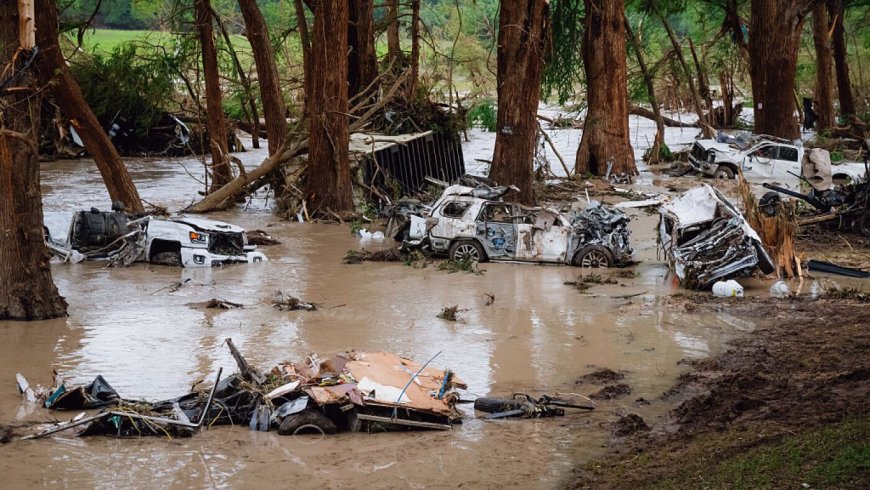Kerr County's Struggle to Fund Flood Warnings: A Common Challenge
Kerr County in Texas faced difficulties funding a flood warning system, a problem shared by many communities across the country. Despite efforts to secure federal and state grants, limited funding sources have hindered the completion of the project.

Years before the flooding took more than 90 lives in Kerr County, Texas, local officials knew residents faced threats from rapidly rising water. They started planning a flood warning system, one that could alert residents when a flash flood was imminent.
Still, like many other communities around the country, Kerr County struggled to find a way to pay for it. They turned to the largest source available for most localities: funding from the Federal Emergency Management Agency (FEMA).
FEMA has granted billions over the last five years to help communities prepare for disasters. The idea is one that has been proven on the ground: When communities invest in infrastructure and preparation before a disaster, it can dramatically lessen the damage when a disaster hits, as well as save lives.
Kerr County's funding application was turned down by Texas officials in charge of administering the federal funds. As with most of FEMA's programs, there was more demand for money than was available. Kerr County looked into a Texas state grant program for flood projects, but gave up when they learned it would cover only a small portion of the cost.
Now, funding prospects for communities at risk are getting even more limited. The Trump administration has frozen or canceled billions of dollars dedicated to help communities prepare for disasters. Trump signed an executive order saying states should be responsible for funding disaster preparedness, instead of the federal government.
In 2016, Kerr County officials noticed that counties nearby were putting in flood warning systems, designed to save lives. Thirteen people had died in extreme flooding in Wimberley County in 2015. Kerr County faced the same risk.
Officials knew that different sets of river gauges, which measure the height of the water, didn't feed into a centralized system. Some road crossings across the Guadalupe River didn't have adequate warnings. Other counties had installed warning sirens to alert residents when the river was flooding.
The county put together a proposal for a flood warning system, though installing sirens was cut from the plan after pushback, including from one commissioner concerned about sirens going off in the middle of the night. The cost was just under $1 million.
The county then looked to federal funds from FEMA, which were available in Texas through the Hazard Mitigation Grant Program. That program offers money to areas with disaster declarations so they can rebuild and prepare for future disasters. Texas was granted federal funding after several flood disasters, including Hurricane Harvey in 2017. The funds are administered by the Texas Division of Emergency Management, but Kerr County was turned down twice by the state agency, according to transcripts of county meetings.
Then, Kerr County, along with the Upper Guadalupe River Authority, looked to state funding. Texas had created a special fund for flood projects in 2019, known as the Flood Infrastructure Fund, which was seeded with $793 million. It offers loans and grants, though the grants still require local communities to pay for much of their projects.
Kerr County's funding struggle is common. Many communities across the country don't have the funds needed to build large flood control projects that could keep residents safer. The challenge is that those projects don't generate revenue, unlike a water supply project where cities can charge residents for the water itself.
Even if Texas were to construct all the needed flood projects, climate experts say it wouldn't fully protect residents. That's because many projects don't take climate change into account. In a hotter climate, rainfall has already gotten more intense in Texas. Still, many communities use outdated rainfall records to design their projects and calculate what kind of storms they should endure.
In Harris County, where Houston is located, flood officials analyzed whether rainfall had gotten worse and found that extreme storms that used to drop 13 inches of rain now drop 17 inches of rain. That added millions of dollars to their construction costs, since the flood projects needed to be engineered to handle more water.
\"The past used to be reliable for engineers to depend upon to predict the future, but with climate change, you can't do that,\" says Jim Blackburn, co-director of Rice University's Severe Storm Prevention, Education and Evacuation from Disasters Center. \"I think that, in a nutshell, is one of the biggest problems we're facing throughout the country.\"
According to the source: NPR.
What's Your Reaction?
 Like
0
Like
0
 Dislike
0
Dislike
0
 Love
0
Love
0
 Funny
0
Funny
0
 Angry
0
Angry
0
 Sad
0
Sad
0
 Wow
0
Wow
0














































































































































































